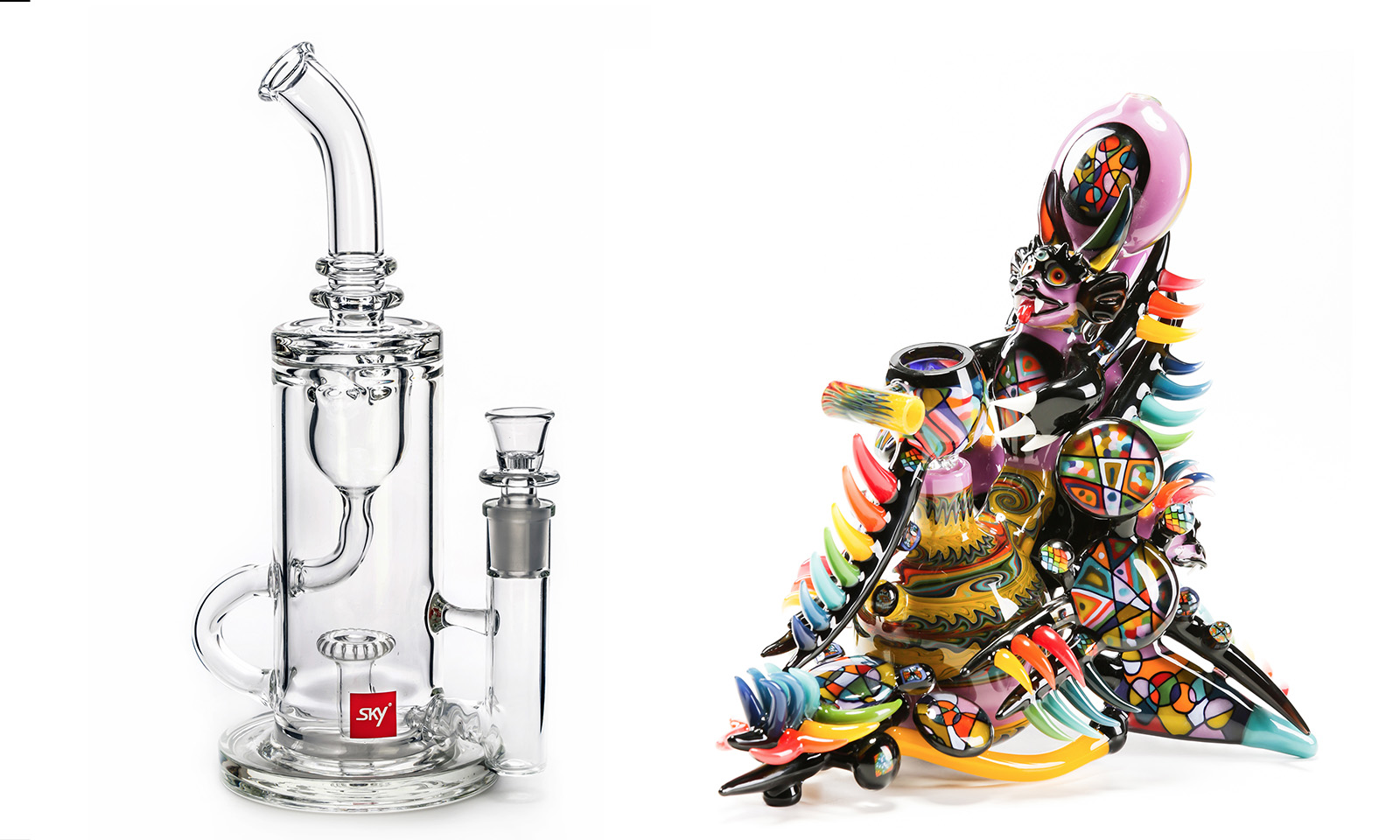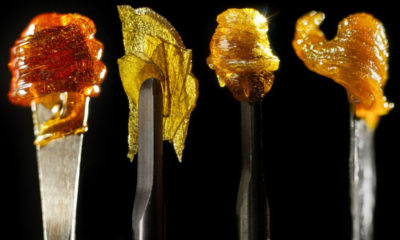Headie vs. Scientific Glass
It’s easy to think of scientific glass as non-decorative art that would fit in a lab and headie glass as colorful and ornamental, but many pieces walk the line between both styles.
In the ever-expanding world of glass pipes, many connoisseurs find themselves categorizing the glass they’re looking at into the broader categories of headie and scientific.
While some might say understanding the difference is as easy as production work versus one-off artistic creations, the line between the two is as murky as it’s ever been, with collaborations between artists of varying backgrounds getting more complex than ever.
Some of the greatest pieces in the world might be the hardest to categorize. At some point, you have to consider all glassmaking a science, given the dozens of hours someone may spend just doing prep work or getting colors ready, right?
We asked Doug Dracup, founder of Hitman Glass and the hash-and-glass megafest Chalice, for his take on the differences between headie and scientific glass.
“When I think of scientific glass, I think of people’s background,” Dracup said. “I’ve dealt with actual chemistry facilities and companies making glass for other fields, so I think it comes down to the skill set.”
Dracup pointed to glass artists Hamm Brushland and Steve Bates as examples.
“These guys are from a scientific background, but they make clear glass that I consider high-end headie stuff for sure,” he said. “The functionality, the seals, the attention to detail are all there — but in the end, the function really is the biggest separator.”
Dracup then spoke on the more defined headie glass market saying it mainly came down to color, linework and different styles of drawing.
“But for us, my crew will spend a week making a crazy compound recycler thing and it’s about as technical as you can get,” Dracup said. “It’s a really complex piece. Even though it’s clear it’s headie.”
Dracup describes the generalizations around glass terminology as rough.
Some of the headiest and most coveted pieces of the moment — lamps from Bluegrass Glass — are whipped up by another former scientific craftsman, Ari Rom.
“Ari worked for Hitman for years, but before that, he spent years working in a scientific glass factory,” Dracup said. “I kind of poached him out of there and hired him after I sold him on the idea there was a demand for these pipes. He ended up making a good portion of the Hitman customs.”
Dracup says particular skills transfer immediately when going from beakers to bongs.
“It’s a lot of lathe work,” said Dracup. “The actual lathe work is the scientific background. When a lot of these glassblowers are doing this stuff by hand, these other guys have shop experience and have worked on a lathe. A lot of times, these guys are taught by someone who really knew how glass worked, as opposed to what they could get away with.”
We reached out to the King of the Kraken, otherwise known as Jimi from Wicked Glass, to get his take as an artist exclusively making pieces that are wild on the eye.
“I never thought about it, but I’d say the difference is headie glass puts artistic form first, function second,” Jimi said. “Scientific is about function with a dabble of art, but there is an art in function so it depends on what flavor you like.”
Regardless of the vernacular, for collectors, the only definition that has mattered over the years is how the piece spoke to them and to market trends. Etienne Fontan, the vice president of Berkeley Patients Group (the oldest operating dispensary in the U.S.), has been around the glass scene since the mid-’90s back at the Galaxy Gallery in LA. He believes whether glass is defined as headie or scientific is really all just a matter of preference because so many great artists are doing both.
“Look at Mothership — the clear motherships are a work of art and fully functional, some more functional than others in that lineup,” Fontan said. “Yet their colored pieces made the same style and function sell for sometimes go two or three times what the clears go for. Why? That ‘why’ has always fascinated me.”
Fontan said, in the end, it’s all art and depends on what you personally value as art.
“Some value scientific [glass] for its lack of flaws, others value the colors,” he said. “The market seems to sustain the idea of color has more value. The market set that, the artists promoted it. It has become reality.”
In the end, both types of glass can go for hefty price tags.
“What shapes the future is the present and presently both have significant market value and pull,” Fontan said. “With legalization, more people will become aware of the art currently and of its recent past. It’s fun to watch this go down and to watch artists push each other the way the Impressionists used to do when they gathered in Paris. It is that type of art and artists making work today.”
TELL US, do you own work by any glass artists?
Originally published in Issue 31 of Cannabis Now. LEARN MORE


























